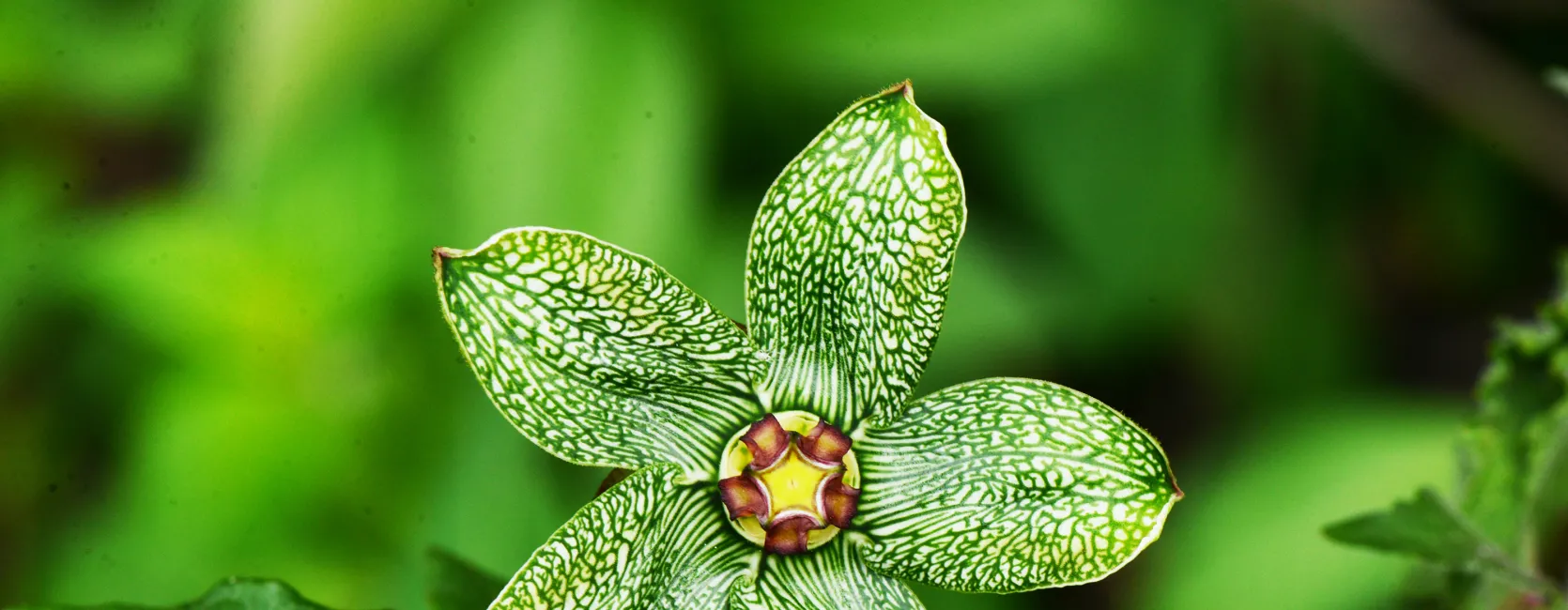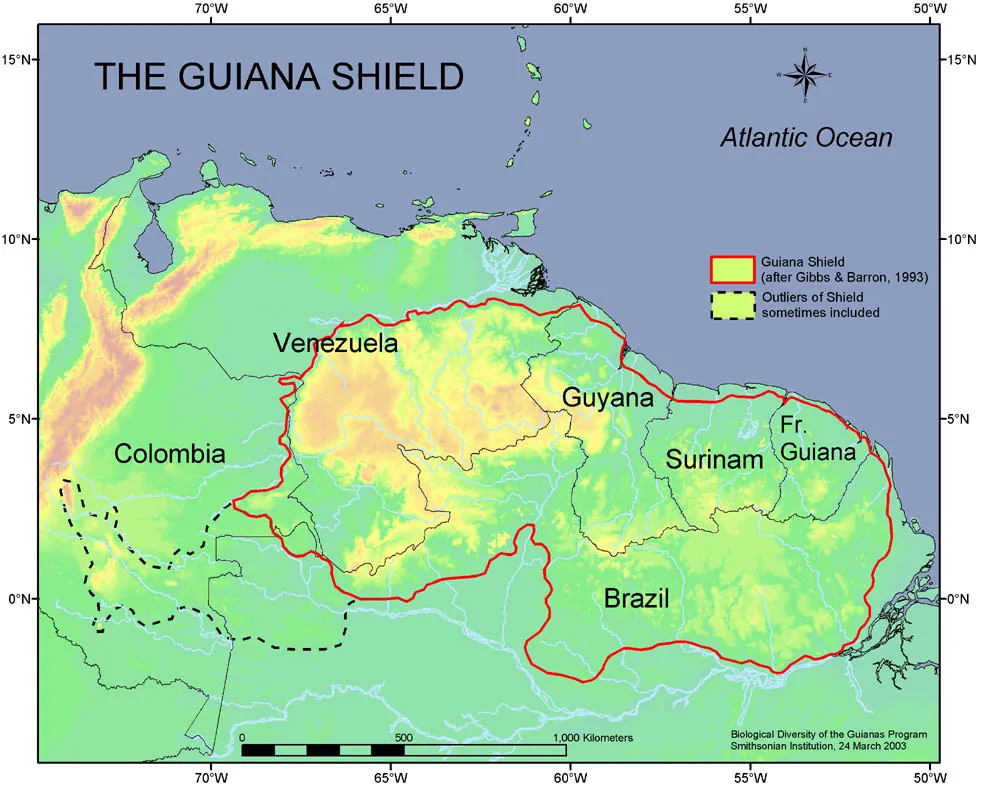Image


The Biological Diversity of the Guiana Shield Program (BDG) recently celebrated its 30th anniversary. This dynamic program seeks to document, study, and preserve the biological diversity of the Guiana Shield. The Shield is a natural area occupying the northeast corner of South America and has a rich and poorly explored biodiversity. Understanding diversity in the area is complicated by the fact that it encompasses six political units (Guyana, Suriname, French Guiana, and parts of Colombia, Venezuela, and Brazil) and five languages. The Shield includes a wide variety of habitats including the unique "Lost World" tepuis and towering greenheart forests, as well as savannas, lowland and montane forests, and coastal mangrove areas, each of which has a complex interaction of plants and animals. BDG has worked to explore this rich diversity and to make the information available and useful to the public and a variety of agencies. Although based in the National Museum of Natural History’s Department of Botany, the program has interacted with scientists in almost all of the NMNH biodiversity departments as well as the National Zoo, STRI, and the Smithsonian Conservation Biology Institute (Front Royal). To accomplish its goals BDG has a worldwide network of collaborators. In fact, we have worked with over 850 people in the course of our research, education/ training, and outreach. These efforts have resulted in tens of thousands of new collections that have been used to address a variety of questions, from basic “What is it?” and “Where does it live/grow?” to synthetic questions such as “What is it related to?”, “Are there adaptive radiations?”, “Where are the highest areas of species richness and endemism?”, and “Where should future expeditions go?”

Over the life of the program it has collected, databased, barcoded, and georeferenced over 60,000 new plant collections. In addition, BDG has databased and barcoded over 121,000 specimens already housed in the National Herbarium, for a total of over 152,000 plant collections in the combined database. All collection data should be available via the online Botany Specimen Catalog in early 2019. Other databases in the museum for the Shield area include 6,290 specimens (3,893 skins, 1,939 skeletons, 821 tissue in fluids, 5 eggs, 2 nests), ca. 9,000 spiders, 8,235 Lepidoptera, 75,000 ants, 23,000 aquatic insects, 450 termites, odonates, and cockroaches, ca. 3,388 amphibians and reptiles, and ca. 1,300 mammals. Over 1,100 papers have been published using the specimens and data including theoretical papers on species richness and methods of estimating diversity as well as various checklists.
Training and education have involved the local people as well as traditional academic activities. Over the years, we have sponsored Amerindian training and parataxonomy courses, had numerous students and postdocs, and frequently hosted visitors. In 2011, we collaborated on an exhibit in NMNH: More than Meets the Eye. Other recent outreach efforts include a method using Google Earth to display information from expeditions and a Google Earth tour on the biodiversity of the Guiana Shield.
Core funding for the program (Federal and Trust) has allowed us to compete successfully for funding from a variety of organizations; over the years we have raised millions of dollars for projects, including funds from the Royal Bank of Canada and USAID to build a biodiversity center in Guyana. Other successful grants and contracts have come from the National Geographic Society, International Development Bank, World Bank, and United Nations Development Program.
We are proud of our accomplishments: however, we believe that every program should have a beginning and an end. Therefore, we have made the difficult decision to “wind down” so that we have time to accomplish our final goals. Over the next few years we have two overarching goals: 1) To publish 3–4 papers that provide a synthesis of biodiversity patterns in the Shield and 2–3 monographs that cover the remaining collector volumes as well as collections of papers related to the Shield, and 2) To complete processing of the remaining specimens and other biodiversity documentation, (e.g., images) and to make sure ALL our data are in EMu and available online. In summary, we seek to make public all our information and ideas, and to leave no backlog of specimens and archives for others to deal with.